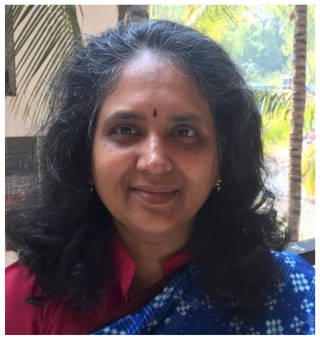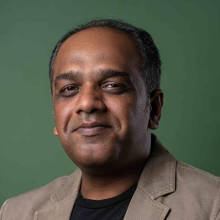[Image generated by DALL.E]
What happens to our data after we die? Is it possible to create digital avatars that may interact with future generations? Or will our data get wiped out totally? If it does, then how? If not, what happens to it? Who owns it?
These are questions that now concern social scientists, lawyers, and others watching the technology ecosystem evolve. This is because a larger number of people are spending a significant amount of their lives online. It is inevitable that they leave their assets and personalities there. But about these assets and memories after they die? Who owns it? Does it take on the form of a person’s legacy? If that be the case, are we dealing with data right?
NS Nappinai, senior advocate at the Supreme Court of India and founder of Cyber Saathi, makes the point that it is time Indians begin to get serious about “data hygiene”.
“Even today there is resistance to planning inheritance or for death. Data hygiene is certainly not top of this list though it probably ought to be. Wills addressing social media accounts, passwords and other data related issues ought to become normative conduct,” she says. “Whilst several platforms provide assistance in closure or maintenance of accounts of demised persons, clarity and certainty on such aspects is critical and possibly law could provide this.”
This isn’t just a practical issue, it is a deeply philosophical one as well, the sociologist Carl Ohman points out. He is the author of The Afterlife of Data. In a conversation with Abhishek Kumar, host of the Point Blank podcast and a friend of Founding Fuel, Ohman urges us to think of the internet as a kind of global archive. He points out that humans are unique in how we treat the dead. “Animals need the physical carcass to remember,” he says, “But we live in worlds built by the dead.”
This is why Ohman views the internet as the latest iteration of this archive, where the living and dead increasingly share space. Every message, a photo, gaming profile, and all else we don’t even think of now, is stored online. It’s part of what he calls our “digital remains.” But unlike physical archives, where records are preserved intentionally, our digital remains are co-owned by corporations whose motives are profit-driven and not preservationist. Is this in the best interest of a dead person? As things are, perhaps not.
The Illusion of Immortality
The internet is more fragile than it appears. It relies on expensive servers and data centres. To make his case, Ohman does a thought experiment. He asks us to imagine what happens if Facebook “does not grow” from the numbers of people it has had since 2019 (which is implausible), until the mid 2060s. “(T)here will be more dead than alive users on Facebook.”
And if the company continues to grow at the pace it does, things begin to look more dire. The company will have to deal with the data of 5 billion dead users by the end of this century.
In both cases, this is a lot of data to store and deal with. All Big Tech companies making money off monetizing people’s information will come to an inflection point and will have to take some tough calls. Because at the end of the day they are businesses and must show profits.
“You know, it’s enough to just push a button and all of the data is destroyed.” says Ohman. “Whereas if you want to destroy a library of physical books, that's a lot of labour. You need to hack them up and literally burn them, which takes a lot of manpower. Versus, like, if you want to destroy the data in a data centre, can just pretty much pull the switch or pull the electric cord. So I’m pointing to like, yes, immortality, but at the same time, immortality, given the fact that someone is willing to pay for it.”
“And somebody is going to make the decision, okay, who’s worth preserving and who do we erase from digital history?” Eventually, it boils down to who gets remembered, and who gets erased. “It’s plausible that digital legacies from Africa or South Asia could be wiped out due to their perceived lower commercial value.”
His point is that a person’s data is only as valuable as it is commercially viable.
Who Owns Your Heritage?
Now, consider this in a digital world: each social media profile is a digital heirloom of sorts. But unlike heirlooms that are handed down through generations, digital profiles are co-owned with a corporation. “When you’re alive, you own it together with, say, Meta or Google,” Ohman explains. “But once you’re gone, they’re the sole owners.”
In regions like Europe, stringent privacy laws end with death, leaving data free to be managed—or exploited—as corporations see fit.

“The legal heirs or administrator of the deceased would have absolute rights in handling the personal data of the deceased. They would have to seek remedial action from the platform on which data is stored and also formulate what is the action they seek.”
- NS Nappinai, senior advocate, Supreme Court of India, and founder of Cyber Saathi
Nappinai says that “The legal heirs or administrator of the deceased would have absolute rights in handling the personal data of the deceased. They would have to seek remedial action from the platform on which data is stored and also formulate what is the action they seek.” But, she cautions, “The procedures will vary with the platform.”
Does this mean the dead have no rights? To make her case, Nappinai points to the movie Forrest Gump. Here, advanced computer-generated imagery (CGI) was used to insert Tom Hanks’ character into archival footage alongside historical figures like John F. Kennedy, creating seamless interactions with people who had died a long time ago and adds that when it comes to personality rights and use thereof through CGI, consent of the person or the administrator of the deceased person’s estate would be essential, drawing on a series of orders from the Delhi High Court.
This visual trickery was groundbreaking at the time, but it also sparked questions about the boundaries of representation and consent, especially concerning people who could no longer control their image.
In the context of digital legacy, CGI serves as a powerful metaphor for the way a person’s digital presence—through data, images, videos, and even AI-driven conversations—can be preserved, manipulated, or repurposed in ways they may never have intended. Nappinai points out that with the rise of technology, legal clarity on use of personal data of deceased persons is crucial. As she puts it, “Law already restrains vilification of the deceased, and even innocuous usage of their data, which is tantamount to exploiting the same, ought to be regulated.” Her position, echoed in the Delhi High Court orders, reinforces the idea that digital likenesses, though technically feasible, should be handled with the same sensitivity and consent considerations, as a physical likeness or a photograph.
In essence, the Delhi High Court’s orders are a reminder that while technology like CGI can powerfully bring someone’s image or essence back to life, it must be done with a degree of respect and oversight to avoid exploitation. The court’s protections affirm that the person’s dignity and intent matter, adding weight to Nappinai’s call for clear digital legacy planning.
The Future of Grief
As we navigate the ethics of data after death, Ohman introduces an unsettling idea: our data might resemble an “informational corpse.” He argues that just as mishandling a physical body would be disrespectful, so too would mishandling one’s digital remains. “What we do to a person’s data after death, we do to them,” he explains.
Ohman’s research also brings to light the emotional weight attached to these digital traces. He recounts the story of a boy who, years after his father’s death, discovers his dad’s best lap time on a video game they used to play together. As he races the “ghost car” of his father’s best time, he realises that beating it would erase this last, preserved memory. “He holds back,” Ohman says, “allowing his dad’s ‘ghost’ to live on in the game.” It’s a powerful reminder that these traces, no matter how trivial, hold significant emotional weight.
Today, as technology advances, the ability to interact with “ghosts” of loved ones is no longer confined to a video game. Several companies are already using AI to create digital avatars based on a person’s digital activity, allowing family members to “chat” with these replicas. StoryFile, a company based in Los Angeles, has taken this idea a step further, allowing people to record themselves answering questions so that, at their funeral, loved ones can interact with them as if they were still present. For Ohman, this is just the beginning. “Ten years ago, this seemed creepy,” he says. “But as AI becomes more common, the line between life and afterlife is blurring.”
The implications of this technological shift are profound. “AI may fundamentally change the way we grieve,” Ohman says. Where once we turned to memories or even religious rituals for solace, future generations might turn to interactive avatars. This shift is already visible in places like South Korea, where virtual reality has allowed a grieving mother to interact with a lifelike simulation of her deceased daughter, captured in a video that went viral. Ohman believes that in the coming years, such interactions may become a normalised part of grieving—a thought that both fascinates and unsettles.
Practical Steps for the Indian Context
Nappinai’s advice includes three immediate steps for those ready to get started, even within India’s evolving regulatory landscape:
-
Categorise Your Data. Segregate data based on its importance—personal, financial, social and within these categories, decide what needs to be preserved, what should be deleted, and who should have access.
-
Set Up a Digital Executor. If possible, legally appoint someone who can handle your data posthumously. This person can follow your specific instructions, avoiding any confusion or conflict among family members.
-
Establish Legacy Contacts. Use the tools available on social platforms to designate someone responsible for handling your account in case of death. This offers a quick, effective way to preserve or memorialise your presence based on your wishes.
As she puts it succinctly, “Data handling or hygiene is only as much work as you decide to undertake.”
Have more questions on your mind?
Mail us with your questions on help@foundingfuel.com and we’ll send a selection to NS Nappinai.


